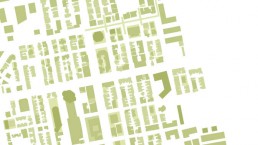DENSITY + OPEN SPACE / HONGKONG
SEMINAR
SS 17
The current wish to live and work in urban areas is the main cause for the densification of city centres. Thus the pressure on open spaces rises twofold: inner-city open spaces are being built on and hence slip the urban fabric, at the same time the pressure of use on the remaining open spaces increases with the mounting number of inhabitants. The seminar investigates the relation of density and open space reflecting this current developments.
The seminar is structured in two parts: First, the topics of density and open space will be worked on by evaluating literature. In a second step, examples of very dense urban structures and related open space typologies are to be analysed, such as Buenos Aires, Seoul, Barcelona, New York, Berlin. Among others, the urban design parameters, the historical course of the densification process, the originated building and open space typologies, key figures of density and so on will be examined and contraposed. Also the question of the quality and functionality of the remained open spaces will be focussed upon.
Through migration and the resulting keen demand for housing, Hongkong’s district of Mongkok has developed and structurally condensed at a rapid pace since 1949. Based on a strict street grid, yet lacking any other urban design requirements, the still steep demand can be read off clearly plot by plot by its individual construction. With party extremely high and slender residential and commercial buildings, the blocks are completely overbuilt in the meantime.
Small pocket parks, rooftop gardens and street spaces remain as open spaces. The street, often narrow and canyon-like, are subject to and dominated by high traffic. The partly remaining backyards are usually too narrow and to dark to stay; so they mainly function as farmyards and passages.
Due to very tiny apartment sizes and the lack of private open spaces the entire social life is moved to the street. During the course of the day, the street spaces are thus differently used. In the morning, they act as traffic paths and delivery zones, in the afternoon and evening hours they turn into markets or ‘catering streets’ highly frequented by pedestrians. These are either entirely closed for traffic or have straitened lanes, as the booths protrude into the street space. By now, the number of initiatives demanding the transformation of streets into permanent pedestrian zone increase: the narrow street profile hardly allows for opportunities of stay, rest or observation due to the constant dense pedestrian traffic.
| Author/s | Viviane Peiseler, Tobias Seith |
| Phase | Final Submission |
| Location | Hong Kong |
| Categories | Seminar |



